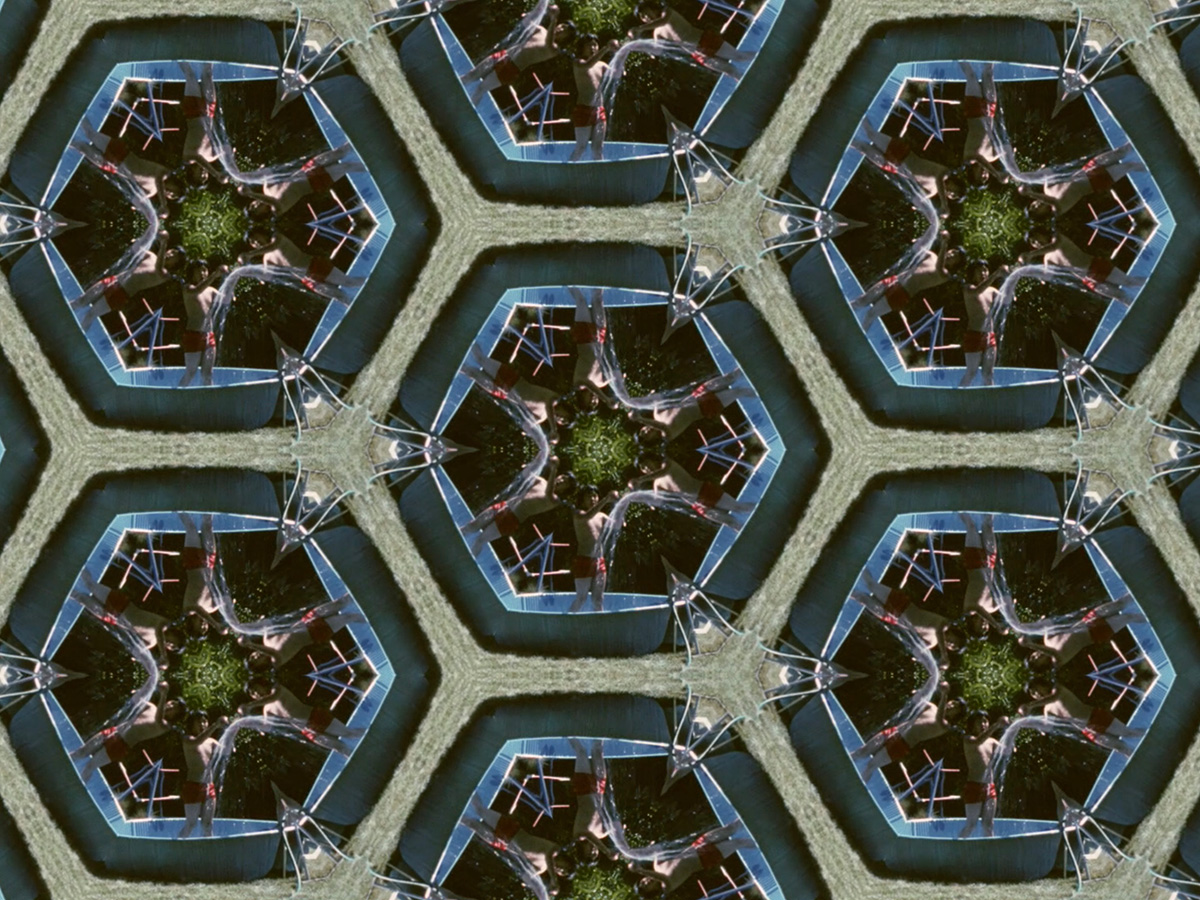
Bojagi (Memories to Light) and other video works
November 16th & 17th • 11am to 5pm
Free admission!
Join us for a special program featuring the video works of Ahree Lee. The program will play on continuous loop on Saturday, November 16th and Sunday, November 17th from 11am to 5pm.
Program
Bojagi (Memories to Light)
2015, digital video with sound, 15 minutes
Bojagi (Memories to Light) is inspired by Korean wrapping cloths, or “bojagi”, which women traditionally pieced together out of scraps of spare material, creating an heirloom full of beauty and utility from what would otherwise be waste. Often made by mothers for their daughters before getting married, bojagis served as a memento from the past that bridged the transition from childhood home to future home. The artist reimagined the bojagi as a video that uses home movies from Asian American families to create a collective wrapping cloth of memories.
Thanks to Center for Asian American Media and the families who donated their home movies to the Memories to Light archive (caamedia.org/memoriestolight/).
Music by Nathan Melsted.
Zero
2011, digitized Super-8 film, 3 minutes
Zero is one of a suite of three pieces that repurpose super-8 home movies from the artist’s childhood. In Zero, the artist edited together all the zoom shots in all her family home movies into a continuous loop that doubles in speed with each repeat. Zooming is a common technique made easy by the presence of a zoom button on the movie camera, which adds emphasis to whatever happens to be in the center of the frame and attempts to close the distance between observer and observed. However, as the speed of the shots approaches asymptotic zero, it becomes clear that the camera is on a collision course with a subject it will never reach.
Panorama
2011, digitized Super-8 film, 2 minutes
Panorama is one of a suite of three pieces that repurpose super-8 home movies from the artist’s childhood Editing together all the panning shots from her parents’ home movies, it explores how camera motion implies a kind of search that mirrors the search of the home movie photographer – for a new sight, for an experience, for a moment to capture for posterity.
Pattern : Code
2019, digital video, 1 minute
Pattern : Code reactivates the innate connections between weaving and computing, and examines the interrelationships between technology, craft, and women’s labor. Archival footage from industrial weaving and computer operations is edited together and overlaid with weaving and punch card patterns, to create this comparison of modes of technological production by women in factories and offices.
About the artist
Ahree Lee is a multi-disciplinary artist working in video, new media, and textiles. She came to her art practice through an unlikely path: working in user experience (UX) design at Apple and HP Labs. She uses patterns and algorithms interchangeably to show that the line between craft and technology is arbitrary and often based on gender-biased valuations of female labor.
Lee received her B.A. from Yale University in English literature and a M.F.A. in graphic design from Yale School of Art, where she studied under Sheila de Bretteville.
Her many commissions include the Asian Art Museum in San Francisco, the Irish Museum of Modern Art; the Cantor Arts Center at Stanford University; Los Angeles Municipal Art Gallery; the 01SJ Biennial; the International Short Film Festival in Leuven, Belgium; the International Festival of Video Art of Casablanca; and the Sundance Channel. Her Webby-nominated video Me was shown by Steve Jobs at the D5 tech conference, and is in the permanent collection of the Museum of the Moving Image, New York. Me currently has over 9 million views.
Lee’s awards include an artist residency at Santa Fe Art Institute; a Rema Hort Mann Emerging Artist Award nomination; an Artist Fellowship Grant in film and video from the state of Connecticut; and an artistic career development grant from Asian American Renaissance. Her work has been written about in Hyperallergic, Metropolis, and Fast Company.
This screening is presented as part of UCR ARTS’ AAPI Film Series Supported by the Voy and Fay Wong Family Endowment. This program is also shown in conjunction with the exhibition Digital Capture: Southern California and the Pixel-Based Image World

